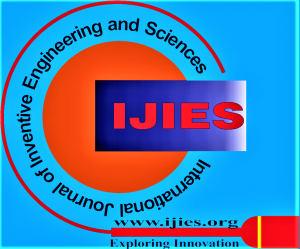![]()
Optimizing YOLOv3 with Tensor Flow for Accurate and Efficient Object Detection
Manjot Kaur Sidhu1, Rishi Raj2
1Dr. Manjot Kaur Sidhu, Professor, Department of Computer Science & Engineering, Chandigarh Engineering College, Chandigarh Group of Colleges, Jhanjeri-140307, Mohali (Punjab), India.
2Rishi Raj, Student, Department of Computer Science & Engineering, Chandigarh Engineering College, Chandigarh Group of Colleges, Jhanjeri140307, Mohali (Punjab), India.
Manuscript received on 27 February 2025 | First Revised Manuscript received on 05 April 2025 | Second Revised Manuscript received on 10 April 2025 | Manuscript Accepted on 15 April 2025 | Manuscript published on 30 April 2025 | PP: 20-26 | Volume-12 Issue-4, April 2025 | Retrieval Number: 100.1/ijies.E462414050625 | DOI: 10.35940/ijies.E4624.12040425
Open Access | Editorial and Publishing Policies | Cite | Zenodo | OJS | Indexing and Abstracting
© The Authors. Blue Eyes Intelligence Engineering and Sciences Publication (BEIESP). This is an open access article under the CC-BY-NC-ND license (http://creativecommons.org/licenses/by-nc-nd/4.0/)
Abstract: Object detection is a critical task in computer vision, with applications spanning autonomous driving, surveillance, and robotics. In this study, we implemented and evaluated the YOLOv3 model for real-time object detection. The model was tested on various images, demonstrating its ability to detect and classify multiple objects with high accuracy. The results indicate that YOLOv3 achieves a mean Average Precision (mAP) of 55– 60% on the COCO dataset, aligning with its original performance benchmarks. Additionally, the model operates at an inference speed of approximately 30 FPS on a Titan X GPU, making it suitable for real-time applications. A comparative analysis with other object detection models, such as Faster R-CNN and SSD, highlights the trade-off between speed and accuracy, with YOLOv3 offering a balanced approach. The proposed implementation successfully detects objects in complex environments, validating its robustness and efficiency. Future work could explore enhancements through transfer learning, model pruning, and integration with next-generation YOLO architectures.
Keywords: Object Detection, YOLOv3, Deep Learning, Realtime Computer Vision, Convolutional Neural Networks (CNNs).
Scope of the Article: Computer Science and Applications
